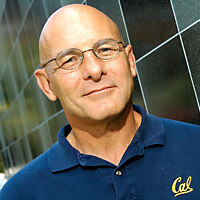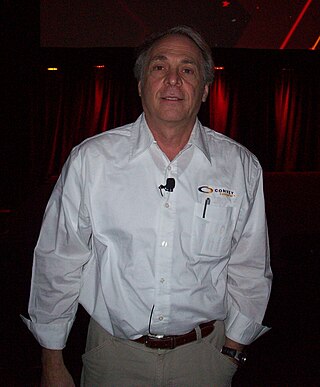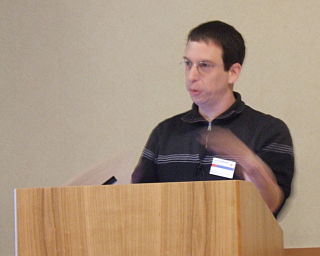Related Research Articles

Precision Architecture RISC (PA-RISC) or Hewlett Packard Precision Architecture, is a general purpose computer instruction set architecture (ISA) developed by Hewlett-Packard from the 1980s until the 2000s.

In electronics and computer science, a reduced instruction set computer (RISC) is a computer architecture designed to simplify the individual instructions given to the computer to accomplish tasks. Compared to the instructions given to a complex instruction set computer (CISC), a RISC computer might require more instructions in order to accomplish a task because the individual instructions are written in simpler code. The goal is to offset the need to process more instructions by increasing the speed of each instruction, in particular by implementing an instruction pipeline, which may be simpler to achieve given simpler instructions.
Very long instruction word (VLIW) refers to instruction set architectures that are designed to exploit instruction-level parallelism (ILP). A VLIW processor allows programs to explicitly specify instructions to execute in parallel, whereas conventional central processing units (CPUs) mostly allow programs to specify instructions to execute in sequence only. VLIW is intended to allow higher performance without the complexity inherent in some other designs.

Apollo Computer Inc., founded in 1980 in Chelmsford, Massachusetts, by William Poduska and others, developed and produced Apollo/Domain workstations in the 1980s. Along with Symbolics and Sun Microsystems, Apollo was one of the first vendors of graphical workstations in the 1980s. Like computer companies at the time and unlike manufacturers of IBM PC compatibles, Apollo produced much of its own hardware and software.

John Leroy Hennessy is an American computer scientist who is chairperson of Alphabet Inc. (Google). Hennessy is one of the founders of MIPS Technologies and Atheros, and also the tenth President of Stanford University. Hennessy announced that he would step down in the summer of 2016. He was succeeded as president by Marc Tessier-Lavigne. Marc Andreessen called him "the godfather of Silicon Valley."

David Andrew Patterson is an American computer pioneer and academic who has held the position of professor of computer science at the University of California, Berkeley since 1976. He announced retirement in 2016 after serving nearly forty years, becoming a distinguished software engineer at Google. He currently is vice chair of the board of directors of the RISC-V Foundation, and the Pardee Professor of Computer Science, Emeritus at UC Berkeley.
The Department of Computer Science is a department of the Faculty of Mathematics, Physics and Informatics at the Comenius University in Bratislava, the capital of Slovakia. It is headed by Prof. RNDr. Branislav Rovan, Phd.
SIMD within a register (SWAR), also known by the name "packed SIMD" is a technique for performing parallel operations on data contained in a processor register. SIMD stands for single instruction, multiple data. Flynn's 1972 taxonomy categorises SWAR as "pipelined processing".

HP Labs is the exploratory and advanced research group for HP Inc. HP Labs' headquarters is in Palo Alto, California and the group has research and development facilities in Bristol, UK. The development of programmable desktop calculators, inkjet printing, and 3D graphics are credited to HP Labs researchers.

Steven "Steve" J. Wallach is an engineer, consultant and technology manager. He is a Seymour Cray Computer Engineering Award recipient.

Dan Boneh is an Israeli–American professor in applied cryptography and computer security at Stanford University.
William Michael Johnson is a technologist, and pioneer in superscalar microprocessor design in the United States.
The Multimedia Acceleration eXtensions or MAX are instruction set extensions to the Hewlett-Packard PA-RISC instruction set architecture (ISA). MAX was developed to improve the performance of multimedia applications that were becoming more prevalent during the 1990s.

Mark A. Horowitz is an American electrical engineer, computer scientist, inventor, and entrepreneur who is the Yahoo! Founders Professor in the School of Engineering and the Fortinet Founders Chair of the Department of Electrical Engineering at Stanford University. He holds a joint appointment in the Electrical Engineering and Computer Science departments and previously served as the Chair of the Electrical Engineering department from 2008 to 2012. He is a co-founder, the former chairman, and the former chief scientist of Rambus Inc.. Horowitz has authored over 700 published conference and research papers and is among the most highly-cited computer architects of all time. He is a prolific inventor and holds 374 patents as of 2023.
Hombre is a RISC chipset for the Amiga, designed by Commodore, which was intended as the basis of a range of Amiga personal computers and multimedia products, including a successor to the Amiga 1200, a next generation game machine called CD64 and a 3D accelerator PCI card. Hombre was canceled along with the bankruptcy of Commodore International.
Thomas Martin Conte is the Associate Dean for Research and Professor of Computer Science at Georgia Institute of Technology College of Computing; and, since 2011, also Professor of Electrical and Computer Engineering at Georgia Institute of Technology College of Engineering. He is a fellow of Institute of Electrical and Electronics Engineers (IEEE). He served as the president of the IEEE Computer Society in 2015.
The following outline is provided as an overview of and topical guide to computing:
Margaret Martonosi is an American computer scientist who is currently the Hugh Trumbull Adams '35 Professor of Computer Science at Princeton University. Martonosi is noted for her research in computer architecture and mobile computing with a particular focus on power-efficiency.
Nancy Marie Amato is an American computer scientist noted for her research on the algorithmic foundations of motion planning, computational biology, computational geometry and parallel computing. Amato is the Abel Bliss Professor of Engineering and Head of the Department of Computer Science at the University of Illinois at Urbana-Champaign. Amato is noted for her leadership in broadening participation in computing, and is currently a member of the steering committee of CRA-WP, of which she has been a member of the board since 2000.
Norman Paul Jouppi is an American electrical engineer and computer scientist.
References
- 1 2 Faculty profile, Princeton University, retrieved 2015-06-13.
- 1 2 Schultz, Steven (April 1, 2002), "Starting from scratch: Ruby Lee draws on experience in industry and academia to rethink computer design", Princeton Weekly Bulletin, 91 (21).
- ↑ PALMS People, retrieved 2015-06-13.
- 1 2 Two-page NSF biosketch, retrieved 2015-06-13.
- 1 2 "A conversation with Ruby Lee", Ubiquity, March 2002.
- ↑ ACM Fellow award citation, retrieved 2015-06-13.
- ↑ American Academy of Arts and Sciences Class of 2020